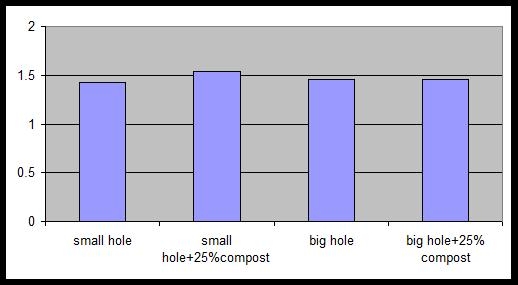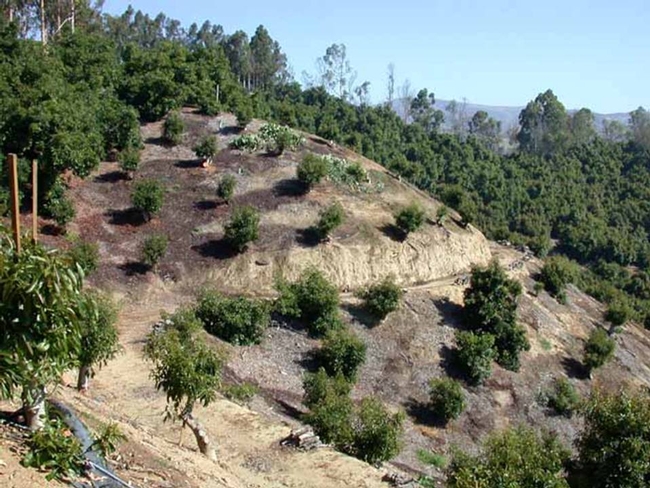- Author: Ben Faber
I just came across a wonderful summary of the different methods that can be used to schedule irrigations based on plant sensors. In th past this is has been labor intensive and not easily adapted to commercial agriculture. This review covers some of those problems and how they have or not been overcome by new technologies. Of course, plant-based techniques are the not the only way to schedule and may only be part of the variety of methods used, such as soil-based ones like tensiometers; or weather-based ones, like ET. A shovel and just looking at trees helps too.
Plant-Based Methods for Irrigation Scheduling
of Woody Crops
ABSTRACT
The increasing world population and expected climate scenarios impel the agricultural sector towards a more efficient use of water. The scientific community is responding to that challenge by developing a variety of methods and technologies to increase crop water productivity. Precision irrigation is intended to achieve that purpose, through the wise choice of the irrigation system, the irrigation strategy, the method to schedule irrigation, and the production target. In this review, the relevance of precision irrigation for a rational use of water in agriculture, and methods related to the use of plant-based measurements for both the assessment of plant water stress and irrigation scheduling, are considered. These include non-automated, conventional methods based on manual records of plant water status and gas exchange, and automated methods where the related variable is recorded continuously and automatically. Thus, the use of methodologies based on the Scholander chamber and portable gas analysers, as well as those of systems for measuring sap flow, stem diameter variation and leaf turgor pressure, are reviewed. Other methods less used but with a potential to improve irrigation are also considered. These include those based on measurements related to the stem and leaf water content, and to changes in electrical potential within the plant. The use of measurements related to canopy temperature, both for direct assessment of water stress and for defining zones with different irrigation requirements, is also addressed. Finally, the importance of choosing the production target wisely, and the need for economic analyses to obtain maximum benefit of the technology related to precision irrigation, are outlined.
https://www.mdpi.com/2311-7524/3/2/35/htm

- Author: Ben Faber
Dothiorella leaf blight which is really a whole range of fungi that cause leaf diseases, along with cankers and wilts goes to many different host plants from citrus to Brazlian pepper to ash to redwood to palm to pittosporum to eucalyptus to pine. Look around, this year you'll see lots of it because it results from water and salt stress.
Images: ash, redwood, avocado, lemon, palm, pistachio, blueberry




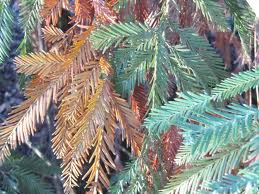
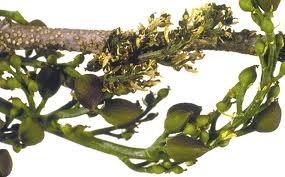
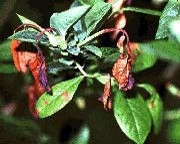
- Author: Ben Faber
Here's a list of links for growers and homeowners on how to prepare for fire and in the case of fruit trees, how to treat them after they have burned and how to calculate the loss of a commercial fruit tree.
Tree and Vine Loss Calculators
Spread sheets to help you calculate loss
Calculate Cost of Fire Damage to Avocado and Citrus Trees
Information from Ben Faber, Soils and Water, Avocado and Minor Subtropicals Advisor
Information on how to care for fire damaged trees from Ben Faber, Soils and Water, Avocado and Minor Subtropicals Advisor
Information on fire ecology and fire safe landscaping for homeowners, developed by Sabrina Drill, Natural Resources Advisor
UC Center for Fire Research and Outreach
Information on fire science from UC experts. Includes information on how to make homes and other structures more fire resistant, developed by Steve Quarles, Statewide Wood Performance and Durability Advisor
Local Fire Departments - have regulatory information you may need
Ventura County
City of Ventura
City of Oxnard
City of Fillmore
City of Santa Paula
Santa Barbara County
City of Lompoc
City of Santa Barbara
City of Santa Maria
Publications Available From University of California ANR Catalog
You can find the publications listed below at theUniversity of California DANR Catalog site (In the ANR Search type fire) and order more than one publication at a time or you may click on one of the links below.if you purchase a priced publication enter the promotion code PRVEN56 at check-out. You'll receive a 10% discount on your order, and a portion of the sales will benefit local programs.
A Property Owner's Guide to Reducing Wildfire Threat - describes ways homeowners can reduce the threat of fire to their property. Cost $1.50
Home Landscaping for Fire - Incorporating fire safe concepts into your landscape is one of the most important ways you can help your home survive a wildfire. FREE
Landscaping Tips to Help Defend Your Home from Wildfire - You can have both a beautiful landscape and a defensible fire-safe zone. FREE
Recovering from Wildfire - discusses issues that family forest landowners should consider following a wildfire. Cost $5.00
WildFire: How Can We Live With It? (DVD) - This program contains general information about wildland fire in California. Cost $20.00
Companion Set: How Can We Live with Wildland Fire? (Publication and DVD) - What role does fire play in the natural cycle and what choices can we make about coping with wildland fire? Cost $27.50
How Can We Live with Wildland Fire? - What role does fire play in the natural cycle and what choices can we make about coping with wildland fire? Cost $10.00

- Posted By: Chris M. Webb
- Written by: Ben Faber
Introduction
In numerous publications world-wide, planting hole recommendations for avocado and other subtropical crops are made for large holes from 2 feet by 2 by 2 to as much as a cubic yard. These recommendations also include incorporation of manures or composts comprising 25% by volume with the native soil. I have noted the use of large holes and amendments in several countries, including New Zealand, Guatemala, Brazil, Costa Rica, Mexico and the United States.
The various reasons given for making these large holes are to disrupt any compaction or limiting soil layers and to create a more conducive environment for root growth. In the case of replanting deciduous orchards, McKenry found it to be beneficial in actually replacing the native soil in the hole with pathogen free soil. In many cases, research has shown that holes much larger than the planting ball and using organic amendments can cause problems for many tree species. Improper mixing of the organic amendment can cause anaerobic conditions and settling due to amendment decomposition. Soil that has not been properly firmed in the hole can also lead to plant settling and stems can drop below grade leading to crown rot.
Nonetheless, on the basis of recommendations made in many countries there could be some value in these planting practices, especially in the light of the effect organic matter has on avocado root rot. Numerous studies have shown organic matter suppresses the causal agent of root rot. This study evaluated the effect of hole size and amendments on avocado growth in an ideal environment with excellent soil conditions and in a more harsh one with heavy soil texture and the presence of the root rot pathogen.
Materials and methods
On the north island of New Zealand in the Bay of Plenty, 20 trees each were planted to one of four treatments: a) small holes (12 by 18 inches) without amendment; b) small holes with 25% by volume compost; c) big holes (60 deep by 30 wide by 24 wide inches) without amendment and d) big holes with 25% by volume compost. Big holes were dug with a backhoe, while small holes were dug by shovel. Trees were approximately 2 feet tall at planting. Soil was a deep sandy loam at both sites. Trees were irrigated by drip irrigation. Trees were ‘Hass’ on ‘Zutano’ seedling rootstock. Trees were planted the second week of spring 2000. Tree height, trunk caliper and canopy volume were measured on a monthly basis for eight months and then twice a year for the next year. In Carpinteria, California a similar trial was established using ‘Hass’ on ‘Toro Canyon’ rootstock. Trees were approximately 2 feet tall at planting. The grove had a heavy clay loam soil and a history of root rot. The trees were on drip irrigation. The trees were planted summer 2001 and monitored for 18 months after planting.
Results and discussion
Figures 1and 2 show the results of the different planting treatments at sites in New Zealand on ideal soils and on the heavy soil infected with root rot in California. Only tree height is shown; trunk girth and canopy volume followed similar patterns. From planting onwards, there were no differences in tree growth in any of the treatments at any of the sites. This would lead one to the conclusion that there is no value in and a great expense in making big holes and incorporating amendment. This is especially so in hillside situations where moving equipment and amendments on steep slopes would be very difficult.
The trees at the Carpinteria site, although infested with root rot, all looked good. The addition of organic matter in conjunction with the clonal rootstocks did not apparently provide any greater disease resistance. This is in accordance with work done by John Menge which shows that the greatest benefit derived from mulching are seedling rootstocks. The effect of mulch on disease suppression diminishes with the rootstock’s resistance to root rot.
Figure 1. Tree height (meters) at site 1 in New Zealand 20 months after planting. No differences were found at the 5% level of significance.
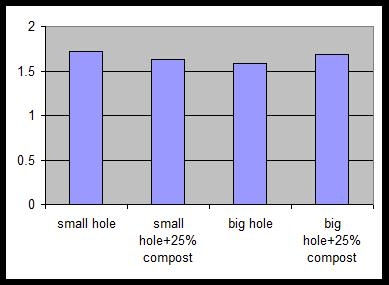
Figure 2. Tree height (meters) in California 18 months after planting. No differences were found at the 5% level of significance.
